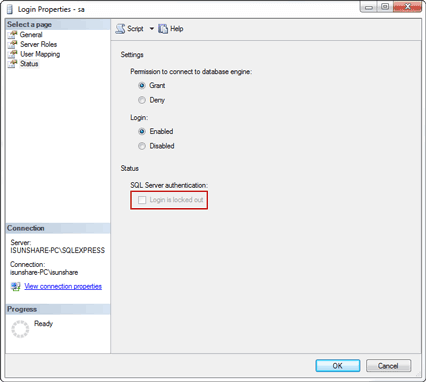
And their permissions should be managed for each database.įortunately, we can create database users to handle this which have the added benefit of working if the database is moved to another server.īefore we create database users, the database must be "contained".
#Sql server sa account definition windows#
For purposes of this paper, weĪre NOT considering Windows authenticationīy default, the database server has a login with administrator permissions. If your application relies on WindowsĪuthentication, you cannot control or hide data and stored procedures that the application needs but the user should never modify or see on their own. You may want your users to use the data in ReadOnly mode, and even then, you may not want them to see data that should be confidential.

However, that also means your users can also run Access, Excel and other programs to connect to your SQL Server database and perform the same tasks against your tables outside Windows users who are allowed to connect to the database. If the application relies on Windows authentication for security and grants users those permissions, your application will perform its tasks for the It would also control who and how records are added and deleted, executing If your application modifies data, it probably has validation rules to ensure the data is updated properly. Windows Authentication is NOT Secure for Applications that Modify Data or Hold Confidential Information
#Sql server sa account definition password#
Name and password because Windows and SQL Server automatically recognize the current user and grants them the permissions that are assigned to that user. Windows authentication doesn't require a user

Microsoft SQL Server database connections can be through Windows Authentication or a login with a user name and password.


 0 kommentar(er)
0 kommentar(er)
